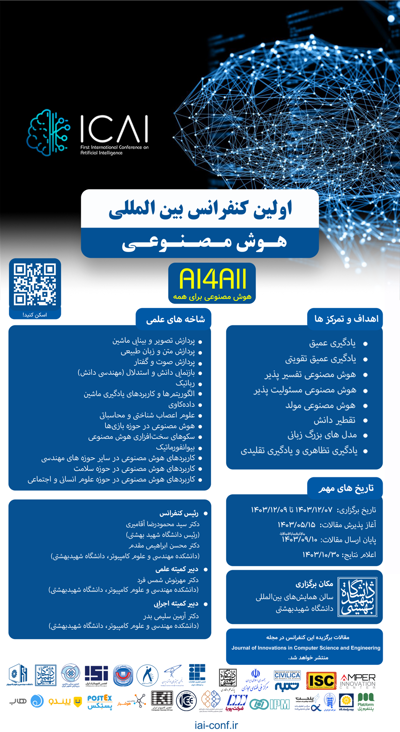0% Complete

نویسندگان :
کلمات کلیدی :
چکیده :
لیست مقالات بایگانی شده
Zahra Lotfi foroushani
Morteza Nalbandi - Athena Abdi
Maryam Tamimi - Hamid Mahdavi
Rahim Mohebbi Gargari - Ali Shalbafan - Seyed Jalil Alavi - Maryam Amirmazlaghni - Seyed Hamzeh Sadatnejad - Heiko Thoemen
Reza Najari - Mehdi Sadeghzadeh
Kiana Karimifard - Mohammad Ghasemzadeh
Mahdie Azizi hashjin - Mahsa Yaghoobi - Babak Nouri-Moghaddam
Fahimeh Jahanbakhshi - Hamid Latifi
Seyyed Ali Zendehbad - Abdollah PourMottaghi - Marzieh Allami Sanjani
Khadejeh Nemati - Safouro Ashoori - Moohamad hadi Amini

